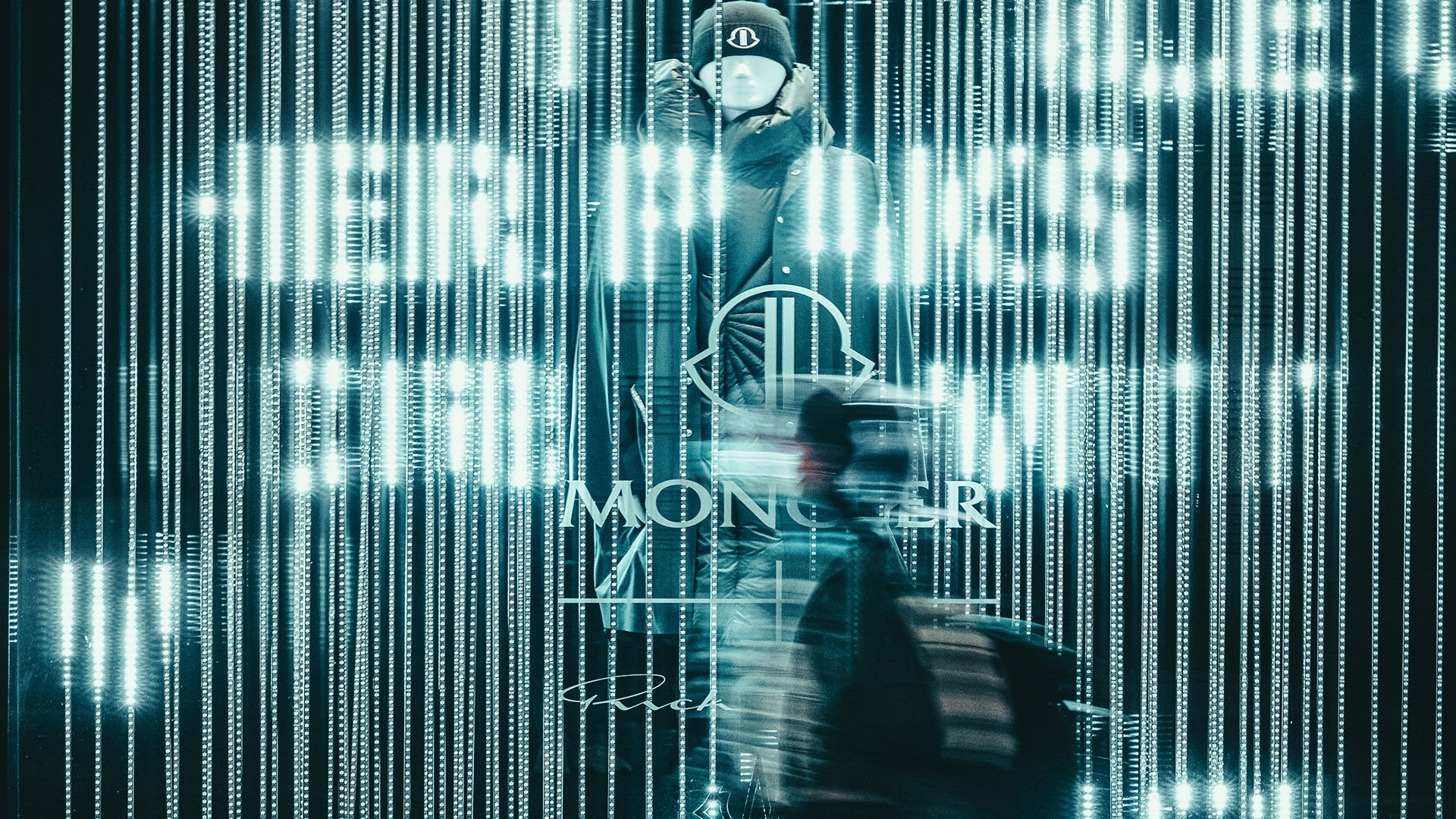It was 1909, in London, when the first lights on the shop windows lit up. The passers-by were ecstatic to observe the new displays. They could admire clothes, jewellery and a variety of products even during their evening walks.
Although in that year the shop windows acquired a different appeal, the idea of merchants to show their products had been born many years earlier. Already during the Renaissance, in fact, the shopkeepers, in order to attract customers, exhibited their best merchandise outside the shop.
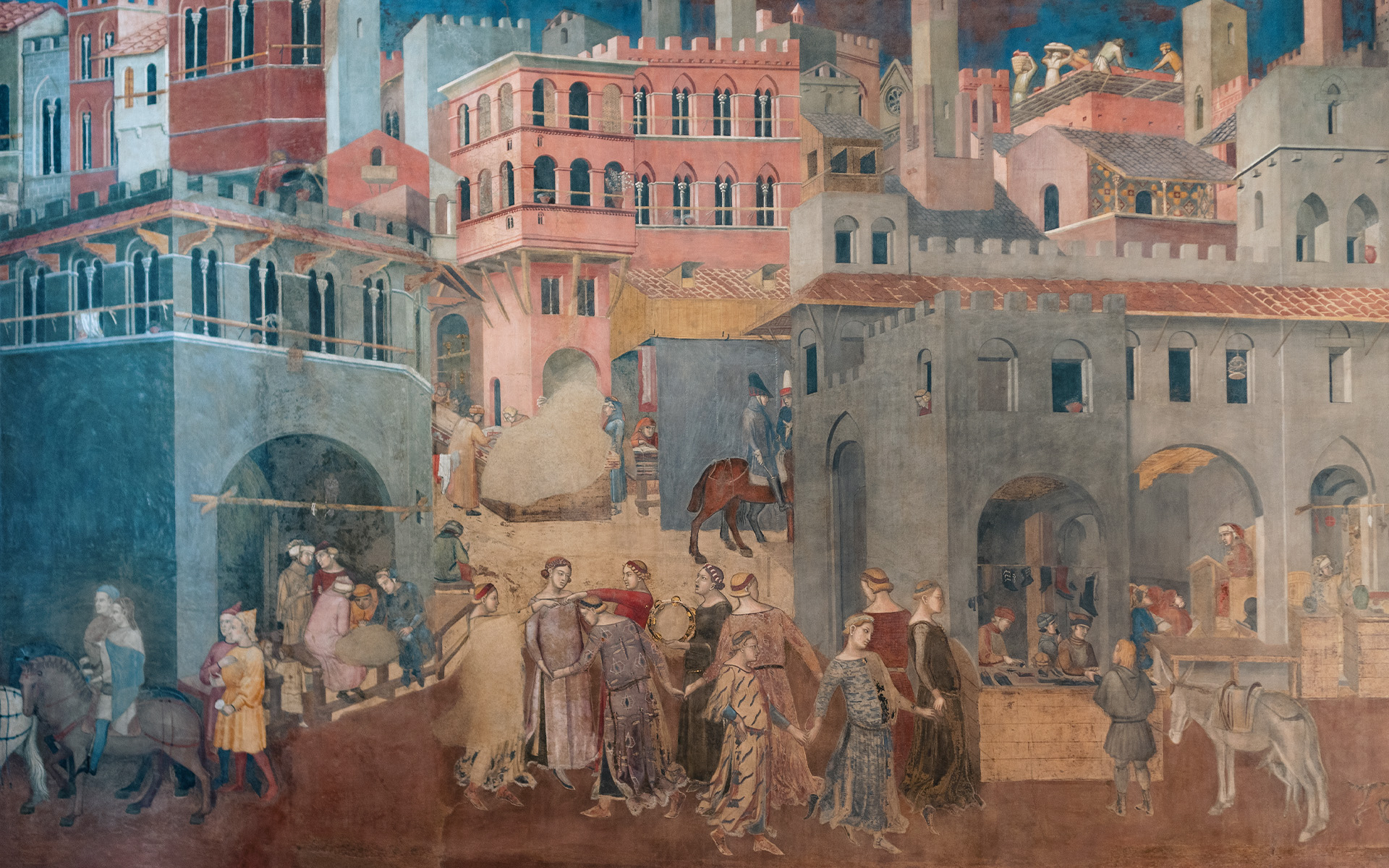
Over the years it was mainly in France that the first techniques, of what we now call visual merchandising, were experimented. Italy, North America, and London followed soon after. However, it was the American Harry Gordon Selfridge, founder of the Selfridges department store, who renewed in London the way of conceiving shop windows, making them even more attractive and stunning. An example of his vision was the exhibition, in 1909, of a real airplane in the window that attracted more than 50,000 curious people.
“A well-designed storefront is a visual story that attracts and engages the audience” – Mary Portas said. Nothing is truer, that’s why they are so important: they allow you to attract people and therefore potential buyers.
The art of selling starts from the eyes
In recent years, the online sale of any type of product has pushed physical stores to reinvent themselves starting from the first impact: the visual one. This has led to an increase in demand for innovative and customised displays. More and more designers are working with new ideas. The aim is to make the product attractive and appealing, to stand out from the competition and finally persuade the customer to buy.
Famous are the Macy’s set-ups in New York. They attract millions of tourists during the Christmas period with their spectacular scenery. They are not only an example of what you can buy but also a way to tell a story to visitors.
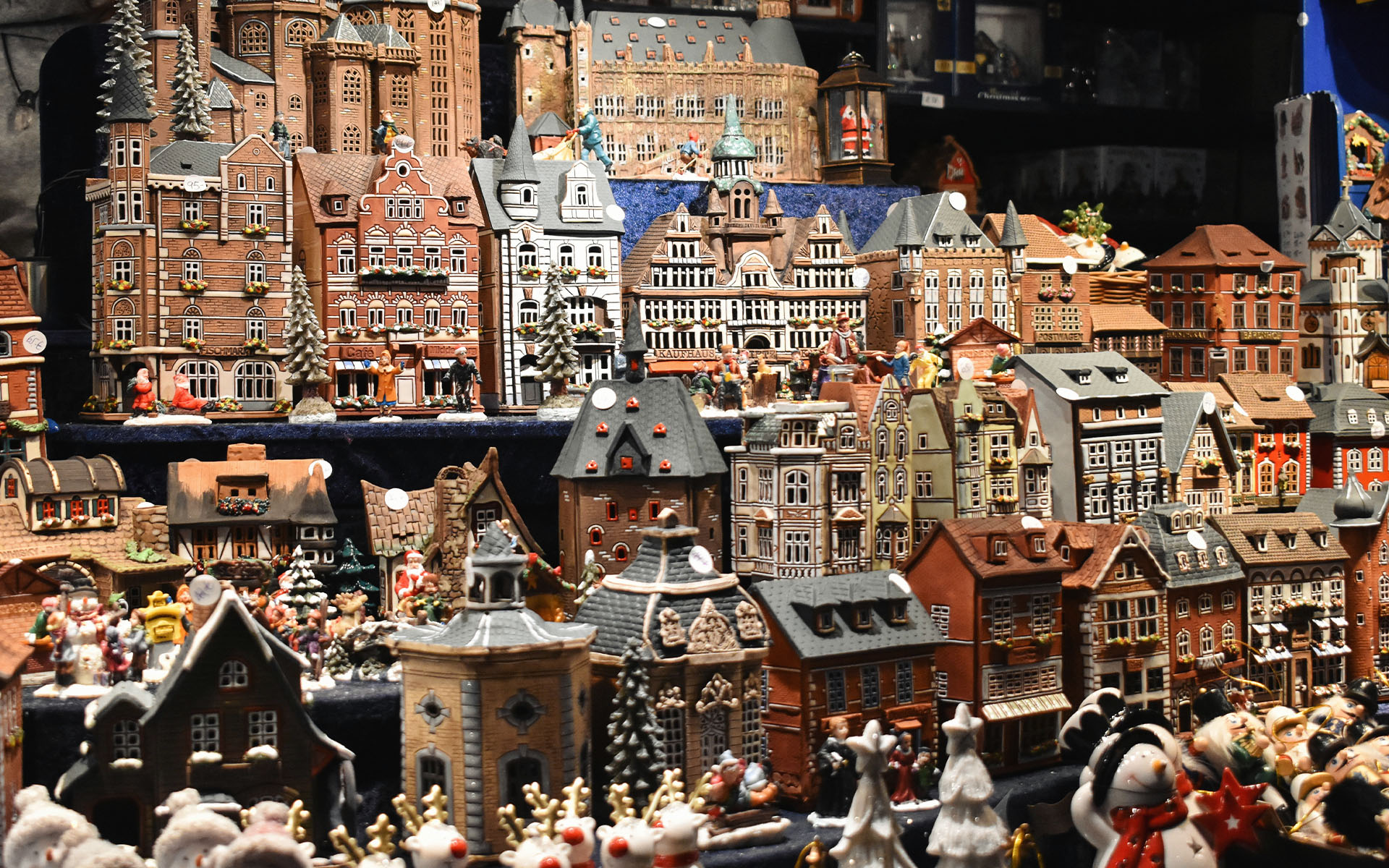
What products are most used for the preparation of these “windows” in the world of shopping?
The mannequins are perhaps the most eye-catching elemen. The stickers are used above all to communicate any promotions. Scenic backgrounds, shelves and furniture want to showcase the items but also pillows, carpets, balloons and flowers. The ideas and combinations can therefore be infinite.
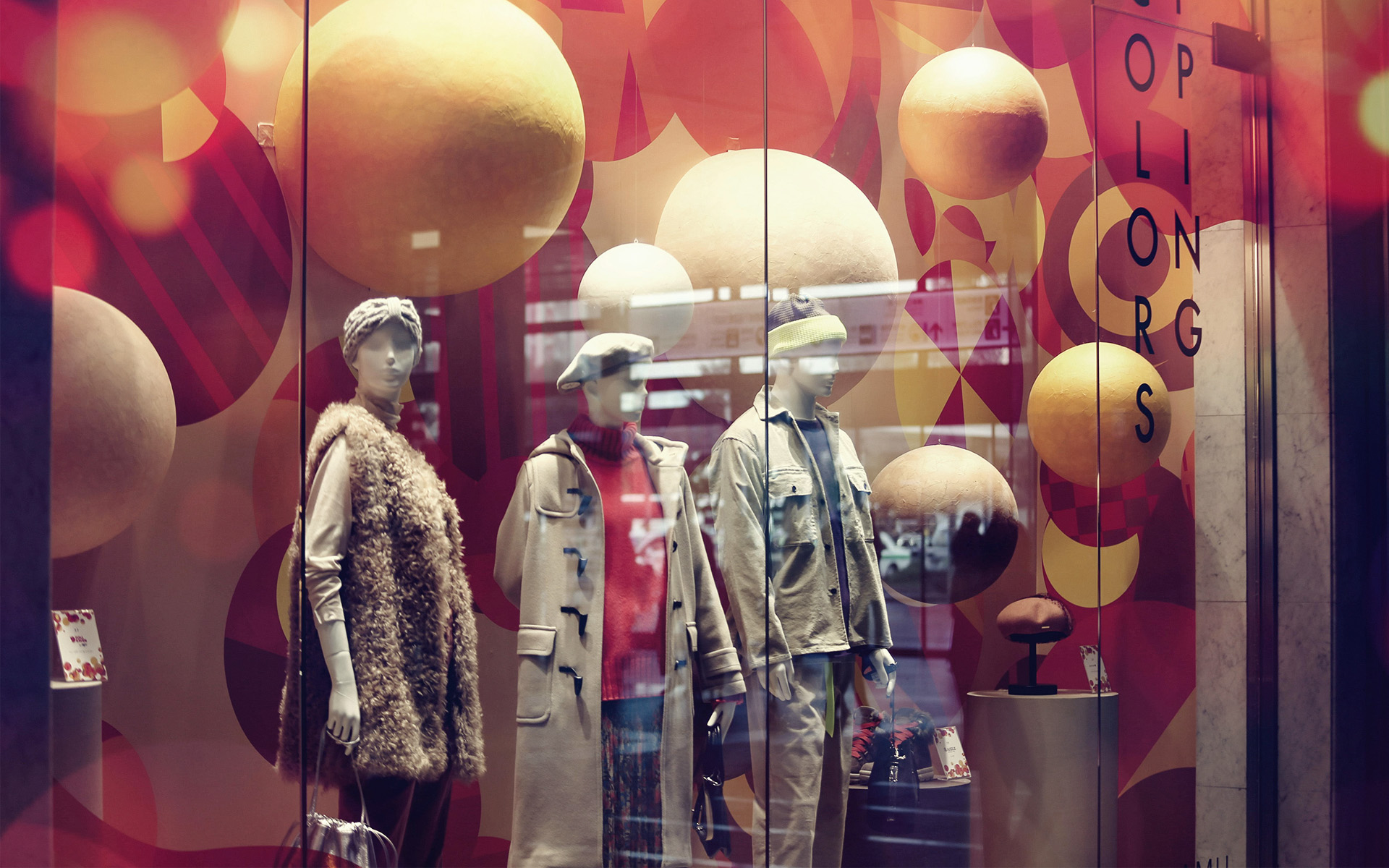
Environment and decorations
The impact of fittings and decorations for shop windows around the world has a very negative effect on the environment. We have to consider that 95% of the materials used are disposed of because they are not needed anymore, they are ruined or obsolete. Disposable materials are often used, but no less polluting for this reason. We are faced with pollution for the production of these fittings, and for their disposal.
Even the most intensive use of lighting is a factor not to be underestimated. Often the showcases are illuminated in a continuous cycle, thus requiring a considerable amount of electrical energy. Excessive lighting can also contribute to light pollution. It can disrupt natural ecosystems and affect the behaviour of nocturnal animals in less urban areas. In the end, excessive visual stimulation can become a source of stress and fatigue for humans themselves.
Therefore, in recent years, the importance of adopting sustainable measures has also been realised in this sector. Greener shop windows and displays are possible.
What is being done?
In the world of visual merchandising, courses, seminars and workshops have been organized to explore new techniques, to learn how to choose eco-friendly materials, reduce waste and create installations that respect the environment and create greener shop windows and displays.
Some companies offer temporary rental services of decorations so that one can regularly change the appearance of the shop windows without having to buy new materials periodically.
Another green solution is to use plants or materials purchased in second-hand markets, thus giving a second life to forgotten objects.
IKEA, the well-known Swedish brand, is also known for its commitment in using recyclable and renewable materials in their shop windows. In the Middle East, the first total green showcases were created.
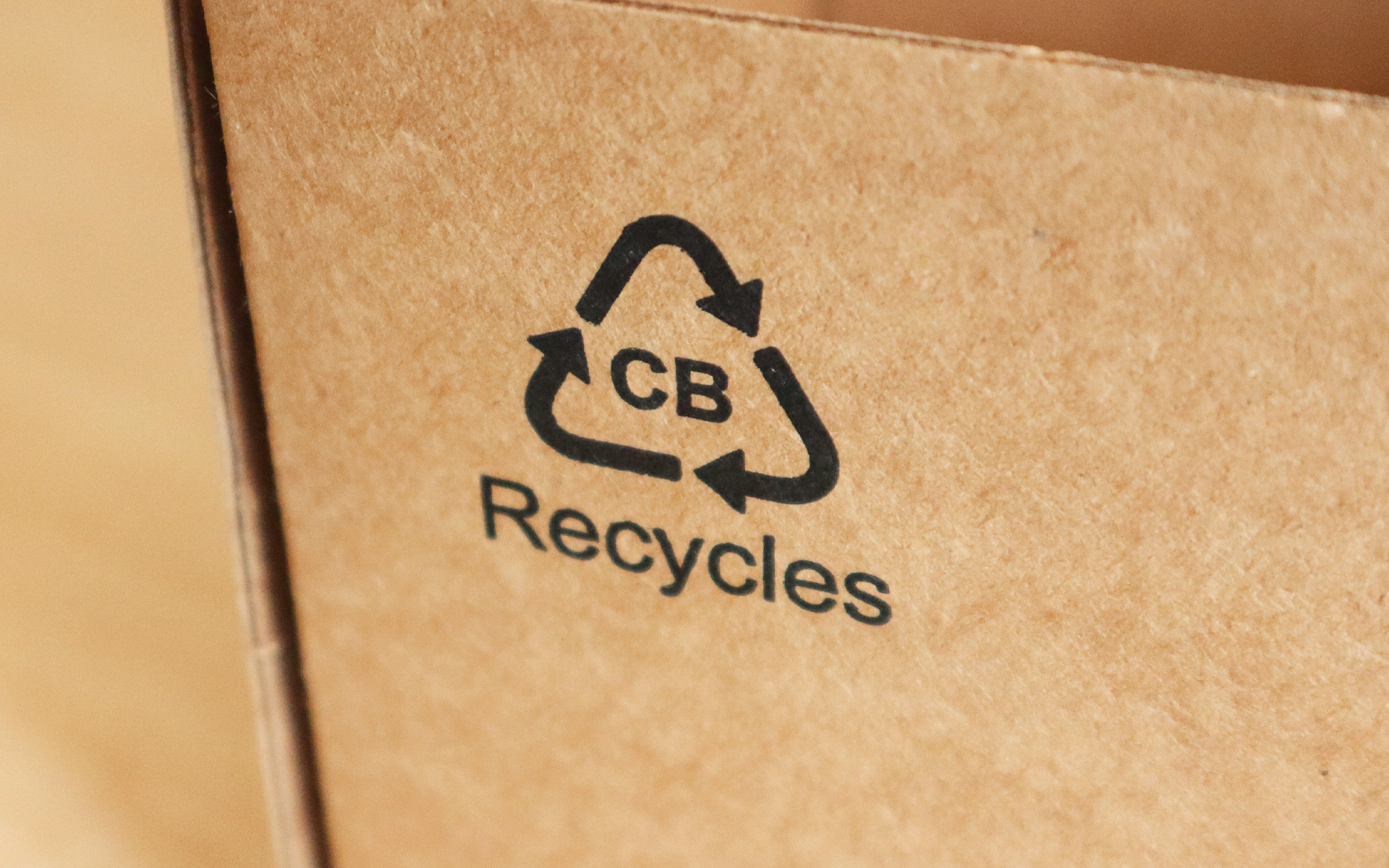
The project is called Ecologicool windows and were used three tons of recycled cardboard. But to make everything even more sustainable, they have thought of a green solution for transport. In fact, trains and ships have been used to avoid the much more polluting planes. Also, LEDs were used instead of classic lighting.
In London, Stella McCarteney’s shop windows have been using biodegradable mannequins. They were made of natural plastic derived from sugar cane and painted with a natural product. Moreover, paper recovered from offices was used to create decorative panels.
In Florence, on the other hand, Benetton had the idea of using the waste wood of beeches knocked down by a storm in 2018 for the floors and a mineral paint for the walls.
Thoughts
How much is a shop window worth? A lot, in terms of ideas, appeal, material, workmanship but above all for our environment. Unsustainable choices will have a very obvious negative impact on the environment and non-green preferences will often reject buyers instead of attracting them. Greener shop windows and displays are not only possible, but necessary.


